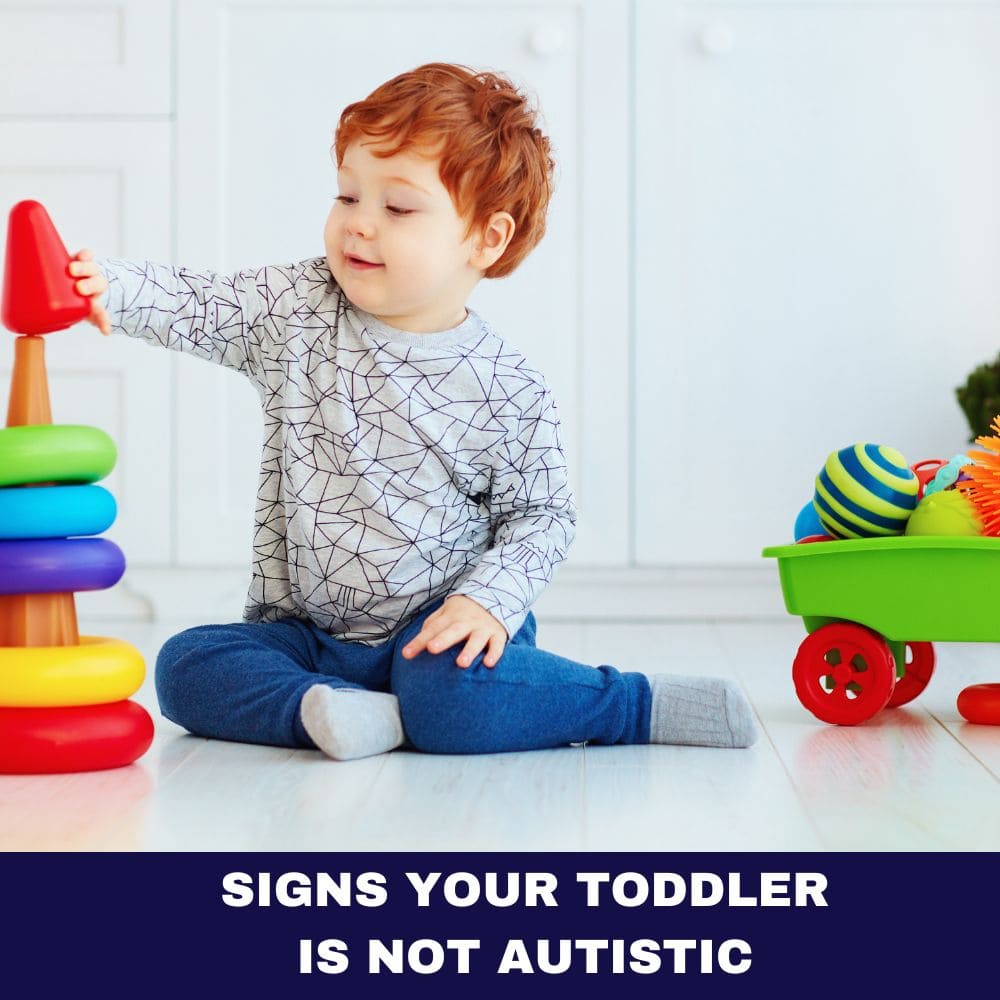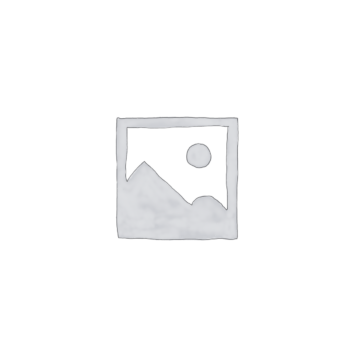Picture this: You’re cradling your little one, enjoying a peaceful breastfeeding session when suddenly, tiny fingers reach up and gently touch your face. It’s a moment that melts your heart and leaves you wondering, “Why does my baby touch my face while breastfeeding?” This tender gesture is more than just adorable – it’s a fascinating window into your baby’s world and development.
In this post, we’ll dive deep into the captivating reasons behind this behavior, exploring the science of touch, the mesmerizing bonding signs it represents, and how to nurture this special connection with your little one. So, let’s embark on this journey of discovery together and unravel the mystery of those sweet, exploring hands!
The Science Behind Baby’s Touch
Before we delve into the specific reasons why your baby touches your face during breastfeeding, let’s take a moment to understand the incredible science behind an infant’s sense of touch. Touch is one of the first senses to develop in the womb, and it plays a crucial role in a baby’s growth and bonding experiences.
From the moment they’re born, babies use touch to explore and make sense of their new world. Their skin is packed with touch receptors, making them incredibly sensitive to different textures, temperatures, and pressures. This heightened sensitivity is particularly noticeable in their hands and faces.
Recent research has shed light on just how important facial touch is for breastfeeding babies. Scientists have developed a fascinating 3D-printed device to measure brain activity in response to facial touch in newborns. This groundbreaking study revealed that even the gentlest touch on a baby’s face can trigger significant brain activity, highlighting the critical role of facial sensation in enabling successful breastfeeding.
This research not only helps us understand why babies are so eager to touch our faces but also has potential implications for premature babies and their development. By understanding how touch influences brain activity and feeding behaviors, medical professionals can make more informed decisions about care practices for these vulnerable infants.
As we explore the reasons behind your baby’s face-touching behavior, keep in mind that this simple gesture is backed by complex neurological processes and plays a vital role in your little one’s growth and development.

10 Mesmerizing Reasons Why Your Baby Touches Your Face While Breastfeeding
Now, let’s dive into the heart of the matter – the ten mesmerizing reasons why your baby might be reaching up to touch your face during those precious breastfeeding moments.
1. Exploring and Learning
Babies are natural-born scientists, constantly investigating their environment. When your little one touches your face while breastfeeding, they’re essentially conducting a tactile experiment. They’re learning about the contours of your face, the texture of your skin, and the difference between soft cheeks and firmer nose or chin.
This exploration helps them build a mental map of your features, which is crucial for facial recognition and emotional development. It’s their way of saying, “Hey, I’m getting to know you!” Next time your baby reaches out, try gently guiding their hand to different parts of your face, naming each feature as you go. This can turn a simple touch into an educational moment.
2. Comfort and Security
There’s something incredibly soothing about skin-to-skin contact, especially for babies. When your little one touches your face during breastfeeding, they’re often seeking that extra dose of comfort and security. Your face represents safety, nourishment, and love – all the things a baby needs to feel secure in this big, new world.
This touch-based reassurance is rooted in our evolutionary past. In prehistoric times, constant physical contact between mother and baby was crucial for survival. Today, it continues to play a vital role in your baby’s emotional well-being. To enhance this comforting effect, try maintaining gentle eye contact and speaking softly to your baby as they nurse and explore your face.
3. Bonding and Attachment
Every time your baby reaches out to touch your face, they’re strengthening the incredible bond between you. This physical connection helps release oxytocin – often called the “love hormone” – in both you and your baby. Oxytocin promotes feelings of love and attachment, making those breastfeeding sessions even more special.
These moments of connection contribute to what psychologists call “secure attachment,” a foundation for healthy emotional development. A securely attached baby feels confident to explore the world, knowing they have a safe base to return to. Embrace these touching moments, literally and figuratively, as they’re building blocks for your lifelong relationship.
4. Sensory Stimulation
Your baby’s brain is like a sponge, soaking up sensory information from every experience. Touching your face during breastfeeding provides a rich tapestry of sensory input – the warmth of your skin, the softness of your cheek, maybe even the tickle of your hair. This sensory feast helps develop neural pathways in your baby’s brain, supporting cognitive and sensory processing development.
To enhance this sensory experience, you could introduce gentle texture play during non-feeding times. Use soft fabrics or safe sensory toys to stimulate your baby’s sense of touch, helping them build on the experiences they’re gaining through face-touching.
5. Communication
Before babies can speak, they communicate through touch, gestures, and facial expressions. When your little one reaches out to touch your face while breastfeeding, they might be trying to tell you something. It could be a way of saying “I love you,” “I’m still hungry,” or even “I’m getting full.”
Pay attention to the timing and nature of these touches. Are they gentle and exploratory, or more insistent? Do they coincide with changes in feeding patterns? By tuning into these non-verbal cues, you can enhance your communication with your baby and respond more effectively to their needs.

6. Self-Soothing
Sometimes, babies touch faces as a way to self-soothe. The rhythmic motion of stroking your cheek or chin can have a calming effect, helping them relax and enjoy their meal. This behavior is similar to how some babies twirl their hair or rub a favorite blanket for comfort.
If you notice your baby tends to touch your face more when they’re tired or overstimulated, it might be their way of calming themselves down. You can support this self-soothing behavior by ensuring a calm feeding environment and gently stroking your baby’s back or head as they nurse.
7. Curiosity about Milk Source
Your clever little one might be investigating the source of their meal! By touching your face and neck, they’re exploring the connection between you, the breast, and the milk they’re enjoying. This curiosity is a sign of your baby’s growing awareness of cause and effect.
To satisfy this curiosity in a fun way, you could try a little game during non-feeding times. Gently guide your baby’s hand from your face to your breast, narrating the journey. “Here’s mommy’s face, and here’s where your milk comes from!” This playful exploration can satisfy their curiosity and reinforce their understanding of breastfeeding.
8. Mimicking Behavior
Babies are expert imitators, often mimicking the behaviors they observe. If you frequently touch your baby’s face lovingly, don’t be surprised if they return the favor! This mirroring behavior is a crucial part of social learning and helps babies understand reciprocal interactions.
Encourage this mimicking by incorporating gentle face touches into your daily interactions with your baby. During playtime, you could try a game of “copy-cat,” where you take turns touching each other’s faces. This not only reinforces the behavior but also adds an element of fun to your bonding time.
9. Establishing Boundaries
As strange as it might sound, when your baby touches your face while breastfeeding, they’re also learning about personal boundaries. These interactions help them understand where their body ends and yours begins – a crucial concept in developing a sense of self.
You can support this learning by gently acknowledging their touch. For example, you might say, “That’s mommy’s nose you’re touching!” This helps reinforce their understanding of separate identities while still maintaining the close bond you share.

10. Pure Love and Affection
Sometimes, the simplest explanation is the truest. Your baby might be touching your face simply because they love you and enjoy being close to you. These sweet gestures of affection are their way of expressing the deep bond they feel with you.
Cherish these moments of pure love. They grow up so fast, and before you know it, those tiny exploring hands will be waving goodbye as they head off to school. So soak in the love, return their affectionate touches, and create beautiful memories of these precious breastfeeding sessions.
Additional Reasons for Face-Touching During Breastfeeding
While we’ve covered the ten main reasons, babies are complex little beings, and there might be other factors at play when they reach for your face during feeding time. Let’s explore some additional possibilities:
Improving Latch
Sometimes, babies might touch your face as they’re trying to adjust their latch. They might be using their hands to orient themselves or to push away slightly for a better angle. If you notice this behavior coinciding with latch issues, it might be worth consulting with a lactation specialist for tips on optimal positioning.
Increasing Milk Production
Believe it or not, your baby’s touch can actually help boost your milk production! When your baby touches you, it can trigger the release of oxytocin, which in turn can stimulate milk let-down. It’s nature’s clever way of ensuring a steady supply for your hungry little one.
Gauging Emotions
Babies are surprisingly adept at reading emotions, and touching your face might be their way of checking in on your emotional state. They’re learning to associate facial expressions with feelings, and your face is their favorite subject to study!
Making Eye Contact
Face-touching often goes hand-in-hand with eye contact. Your baby might be reaching up to ensure they have your full attention, strengthening that all-important eye-to-eye connection that’s so crucial for bonding and social development.
Here’s a quick reference table summarizing these additional reasons:
| Reason | Description | How to Respond |
|---|---|---|
| Improving Latch | Baby uses hands to adjust feeding position | Consult a lactation specialist if persistent |
| Increasing Milk Production | Touch stimulates oxytocin release | Embrace the touch, it’s helping your supply! |
| Gauging Emotions | Baby ‘reads’ your facial expressions | Maintain a calm, positive expression when possible |
| Making Eye Contact | Touch accompanies eye-to-eye connection | Engage in gentle eye contact during feeds |
How to Respond When Your Baby Touches Your Face While Breastfeeding
Now that we understand why babies engage in this adorable behavior, let’s talk about how to respond. Remember, every baby is unique, so what works for one might not work for another. Here are some general guidelines:
- Embrace the moment: If the touch doesn’t bother you, enjoy this special bonding time. These moments are fleeting and precious.
- Gentle redirection: If the touching becomes disruptive or uncomfortable, gently guide your baby’s hand to a more suitable spot, like your arm or their own tummy.
- Provide alternatives: Offer a nursing necklace or a soft toy for your baby to hold and explore during feeding times.
- Communicate: Even though they can’t understand words yet, start explaining boundaries. A simple “Gentle touches, please” can set the foundation for future understanding.
- Be consistent: Whatever approach you choose, try to be consistent. This helps your baby learn what to expect during feeding times.
Remember, responding to your baby’s touch is also an opportunity for teaching and bonding. Use these moments to introduce gentle words, soft singing, or quiet play, enhancing the overall breastfeeding experience for both of you.
When Face-Touching Might Indicate Other Issues
While face-touching during breastfeeding is usually a normal and endearing behavior, there are times when it might signal other concerns. Here’s what to watch out for:
- Latching problems: If your baby seems to be constantly adjusting and touching your face more than usual, it might indicate difficulty with latching. Look out for signs like prolonged feedings, fussiness at the breast, or poor weight gain.
- Ear infections: Increased face touching, especially around the ears, combined with fussiness during feeding, might be a sign of an ear infection.
- Teething: As teeth start to come in, some babies might touch their own face or yours more often to relieve discomfort.
- Overstimulation: If your baby seems agitated and is touching your face more frantically than usual, they might be overstimulated and in need of a calmer environment.
If you’re concerned about any of these issues, don’t hesitate to reach out to your pediatrician or a lactation consultant. They can provide personalized advice and ensure that both you and your baby are comfortable during feeding times.
The Evolution of Face-Touching Behavior as Babies Grow
As your baby grows and develops, you might notice changes in their face-touching behavior during breastfeeding. Here’s a general timeline of what you might expect:
| Age | Typical Behavior | What It Means |
|---|---|---|
| 0-3 months | Reflexive touching, often with closed fists | Newborn reflexes at work |
| 3-6 months | More intentional touching, open hands exploring | Developing motor skills and curiosity |
| 6-9 months | Purposeful touching, may try to ‘offer’ you objects | Growing understanding of give-and-take |
| 9-12 months | May become more playful or distractible during feeds | Increasing awareness of surroundings |
Remember, every baby is unique, and yours may develop at their own pace. This timeline is just a general guide to help you understand the changes you might observe.
Cultural Perspectives on Baby’s Touch During Breastfeeding
It’s fascinating to note that attitudes towards a baby’s touching behavior during breastfeeding can vary widely across different cultures. In many Western cultures, this behavior is often seen as endearing and is encouraged as a bonding experience. However, in some Asian cultures, babies are traditionally swaddled during feeding, limiting their ability to touch and explore.
Some cultures believe that allowing a baby to touch the face during feeding can lead to the development of bad habits, while others see it as a crucial part of sensory development. Regardless of cultural background, modern pediatric research supports the importance of touch in infant development.
As a parent, it’s valuable to be aware of these different perspectives. While it’s important to respect cultural traditions, it’s equally important to make informed decisions based on current scientific understanding of infant development. Always feel free to discuss any concerns or questions with your healthcare provider.
Importance of Baby Hand and Nail Care
With all this face-touching going on, it’s crucial to pay attention to your baby’s hand and nail care. Here are some tips to ensure those exploring hands are clean and safe:
- Regular washing: Gently wash your baby’s hands with warm water and mild soap, especially before feeding times.
- Nail trimming: Keep your baby’s nails short and smooth to prevent scratches. It’s often easiest to do this while they’re sleeping.
- Moisturizing: If your baby’s skin is dry, apply a gentle, fragrance-free moisturizer to keep their hands soft.
- Mittens: For newborns, consider using soft mittens to prevent accidental face scratches, especially during sleep.
Remember, good hand hygiene isn’t just about cleanliness – it’s also about protecting both you and your baby during those close breastfeeding moments.
Research and Technology in Understanding Baby’s Touch
Recent advancements in technology have opened up exciting new avenues for understanding baby’s touch during breastfeeding. One particularly fascinating development is the creation of a 3D-printed device designed to measure babies’ responses to facial touch.
This innovative device, developed by researchers at University College London, allows scientists to measure brain activity in newborns in response to gentle touch on different parts of their face. The findings have been eye-opening, revealing that even the lightest touch on a baby’s face can trigger significant brain activity.
This research has important implications, particularly for premature babies. Understanding how touch influences brain activity and feeding behaviors could lead to improved care practices in neonatal units. For instance, it might inform how nurses and parents interact with premature infants to promote better feeding and development.
For parents, this research underscores the importance of those tender moments when your baby reaches out to touch your face during breastfeeding. It’s not just a cute gesture – it’s a crucial part of their sensory development and may play a vital role in establishing successful feeding patterns.
As technology continues to advance, we can look forward to even more insights into the intricate world of infant development and the crucial role of touch in early life.
Conclusion
The simple act of your baby touching your face while breastfeeding is anything but simple. It’s a complex interplay of developmental milestones, emotional bonding, and sensory exploration. From establishing boundaries to expressing pure love, each touch is a step in your baby’s journey of growth and connection.
As we’ve explored, this behavior is not only normal but beneficial for your baby’s development. It strengthens your bond, aids in their sensory and cognitive development, and helps them understand their place in the world. The recent research using 3D-printed devices further emphasizes the importance of facial touch in infant development, particularly in feeding behaviors.
Remember, every baby is unique, and so is every breastfeeding journey. What matters most is that you and your baby are comfortable and enjoying these precious moments together. Whether your little one is a face-toucher or not, each feeding session is an opportunity for bonding and nurturing.
So, the next time those tiny fingers reach up to touch your face during a feeding, take a moment to marvel at the complexity behind this simple gesture. Cherish these fleeting moments, for they are building the foundation of your lifelong bond with your child.
As your baby grows and their touching behavior evolves, remember to adapt your responses accordingly. Stay attuned to their needs, maintain good hand hygiene, and don’t hesitate to seek professional advice if you have any concerns.
Breastfeeding is more than just nutrition – it’s a multisensory experience that plays a crucial role in your baby’s development. By understanding and appreciating behaviors like face-touching, you can enhance this experience for both you and your little one.
So here’s to those mesmerizing moments of connection, those tiny exploring hands, and the beautiful journey of breastfeeding. Embrace every touch, every glance, and every precious second of this unique bonding experience.
FAQ – Why Does My Baby Touch My Face While Breastfeeding
Is it normal for my baby to constantly touch my face while breastfeeding?
Absolutely! Face-touching during breastfeeding is a common and normal behavior for babies. It’s part of their sensory exploration and bonding process. However, if the touching becomes excessive or disruptive to feeding, you can gently guide their hands elsewhere. Remember, every baby is different, and what’s normal can vary. If you’re ever concerned, don’t hesitate to consult with your pediatrician.
My baby scratches my face while breastfeeding. What can I do?
Scratching can indeed be uncomfortable! First, make sure to keep your baby’s nails trimmed and filed smooth. You can do this while they’re sleeping for easier handling. During feeding, try giving your baby something else to hold, like a small toy or a nursing necklace. If the scratching persists, you might want to consider using soft mittens during feeding times, at least until your baby outgrows this phase.
At what age do babies typically start touching faces while breastfeeding?
Babies can start reaching for and touching faces quite early, often around 2-3 months old when they start gaining more control over their arm movements. However, more purposeful touching usually develops around 3-4 months. By 6 months, many babies are quite adept at reaching out and touching during feeds. Remember, though, that every baby develops at their own pace, so don’t worry if your little one’s timeline is a bit different.
Could my baby touching my face while breastfeeding be a sign of autism?
Face-touching during breastfeeding alone is not a sign of autism. It’s a normal behavior that most babies engage in as part of their development. Autism typically shows signs in multiple areas of development and behavior, not just in one specific action. If you have concerns about your baby’s development, it’s always best to discuss them with your pediatrician. They can provide a comprehensive evaluation and address any worries you might have.
How can I make the most of this face-touching behavior for bonding with my baby?
This is a wonderful opportunity for bonding! Here are a few ideas:
- Maintain eye contact when your baby touches your face, smiling and speaking softly to them.
- Gently touch your baby’s face in return, naming the features as you go.
- Sing quiet songs or recite nursery rhymes that involve face touching, like “Pat-a-cake” or “This little piggy” (adapted for faces).
- Use this time for skin-to-skin contact, which has numerous benefits for both you and your baby.
- Simply enjoy the moment, focusing on the connection you’re sharing with your little one.
Remember, these precious moments are fleeting. By embracing and encouraging this behavior (within comfortable limits), you’re fostering a deep, lasting bond with your baby.












